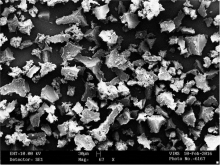
This week marks “Research Week” on our blog and we will be highlighting marine debris research projects throughout the week! Research is an important part of addressing marine debris, as we can only effectively address it by understanding the problem the best we can.
By: Rob Hale, Guest Blogger and Professor in the Department of Aquatic Health Science at the Virginia Institute of Marine Science (VIMS)
Plastics are an increasing problem in our ocean and waterways. The plastic products we use, and hence those that find their way into the environment, are made of different polymers. These include products ranging from disposable water bottles, fishing gear, electronics, microbeads from personal care products, to furniture. Chemical additives are inserted into many plastic polymers to modify plastic properties such as color, flexibility, weather resistance, and flame retardancy. These additives may leach out over time, depending on the chemical structure of both the plastic polymer and the additive.